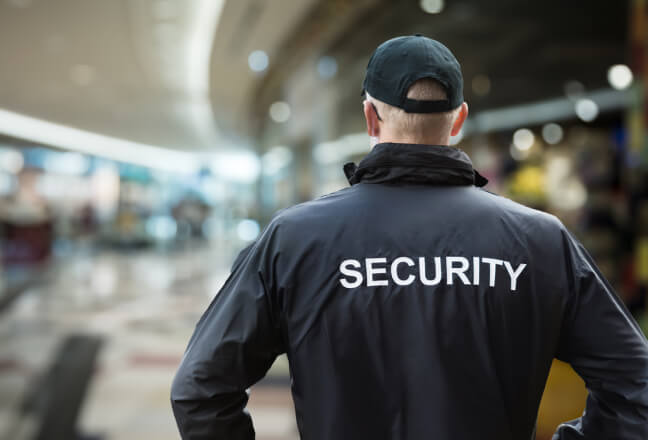Bail enforcement agents, commonly known as bounty hunters, play a critical role in the criminal justice system. Their primary responsibility is to locate and apprehend individuals who have skipped bail, ensuring that they face the court as required. To be effective in this challenging profession, agents must be skilled in a range of advanced techniques, including surveillance, apprehension, and personal safety. The http://bailbeaandsecuritytraining.com provides training for those looking to excel in this field. This article explores these techniques in detail, offering insights into the strategies that professional bail enforcement agents use to succeed in their line of work.
The Role of Bail Bond Services in Bail Enforcement
Before diving into the advanced techniques used by bail enforcement agents, it’s essential to understand the role that bail bond services play in this process. Bail bond services provide a financial guarantee to the court that an individual released on bail will appear for their scheduled court dates. In exchange for this guarantee, the defendant or their family pays a fee, typically a percentage of the total bail amount.
When a defendant fails to appear in court, the bail bond company is at risk of losing the entire bail amount. To mitigate this risk, they employ bail enforcement agents to track down and apprehend the fugitive, ensuring that the individual is brought to justice and the bond is recovered. This partnership between bail bond services and bail enforcement agents is crucial in maintaining the integrity of the bail system and ensuring that justice is served.
Advanced Surveillance Techniques for Bail Enforcement
Surveillance is a cornerstone of bail enforcement. It involves monitoring a fugitive’s activities to gather information about their whereabouts and behavior. Effective surveillance requires patience, keen observational skills, and the ability to remain inconspicuous.
The Art of Covert Observation
Successful surveillance begins with covert observation. Bail enforcement agents must blend into their surroundings, often adopting disguises or using vehicles that don’t draw attention. The goal is to monitor the fugitive without being noticed, allowing the agent to gather as much information as possible. Agents may use a variety of tools, such as binoculars, cameras, and GPS trackers, to assist in their surveillance efforts.
Gathering Intel from Digital Sources
In the digital age, surveillance is not limited to physical observation. Bail enforcement agents often rely on digital sources to track down fugitives. Social media platforms, public records, and online databases provide a wealth of information that can be used to locate individuals. By monitoring a fugitive’s online activity, agents can gather clues about their location, associates, and daily routines.
Apprehension: Strategies for Safely Capturing Fugitives
Once a bail enforcement agent has successfully located a fugitive, the next step is apprehension. This phase requires a combination of tactical planning, physical skill, and a deep understanding of the legal constraints involved.
Planning the Perfect Capture
Apprehension should never be approached without a solid plan. Agents typically conduct thorough risk assessments, considering factors such as the fugitive’s criminal history, the potential presence of weapons, and the environment where the capture will take place. Detailed planning ensures that the operation proceeds smoothly and minimizes the risk to both the agent and the fugitive.
Utilizing Non-Lethal Force
Safety is paramount during apprehension. While bail enforcement agents are often armed, the use of force is a last resort. Non-lethal tools such as tasers, pepper spray, and handcuffs are standard equipment, allowing agents to subdue fugitives without causing serious injury. The goal is to capture the fugitive safely and securely, ensuring that they can be returned to custody without incident.
Prioritizing Safety in Bail Enforcement
Safety is the top priority for bail enforcement agents. The nature of their work often puts them in dangerous situations, requiring them to be constantly vigilant and prepared for the unexpected.
The Importance of Situational Awareness
Situational awareness is critical for bail enforcement agents. This means being fully aware of one’s surroundings at all times, recognizing potential threats, and being prepared to react quickly. Agents are trained to anticipate the actions of fugitives, which helps them stay one step ahead and avoid dangerous confrontations.
Self-Defense Training and Techniques
In addition to situational awareness, self-defense training is a crucial component of an agent’s skill set. Many bail enforcement agents undergo extensive training in martial arts, defensive driving, and tactical firearms use. This training equips them with the tools they need to protect themselves and others while on the job.
Bail Bond Services: Supporting the Criminal Justice System
Bail bond services are an integral part of the criminal justice system. By providing the financial means for securing your release from jail, these services help ensure that individuals can prepare for their court appearances while remaining in the community. However, when defendants fail to appear, bail bond services rely on bail enforcement agents to uphold their end of the bargain.
The Relationship Between Bail Bond Agents and Enforcement Agents
Bail bond agents and bail enforcement agents work closely together to ensure that justice is served. When a defendant skips bail, the bond agent contracts the services of a bail enforcement agent to track down and apprehend the fugitive. This collaboration is vital to the success of the bail system, ensuring that fugitives are brought to justice and the integrity of the court’s decision is maintained.
Did you know that bounty hunting is legal in most U.S. states, but with varying levels of regulation? Some states require bail enforcement agents to be licensed and undergo extensive training, while others have minimal regulations. The profession has a long history in the United States, dating back to the 1800s, when bounty hunters were instrumental in capturing outlaws in the Wild West.
Bail enforcement is a demanding profession that requires a unique combination of skills, including surveillance, apprehension, and personal safety. By mastering these advanced techniques, bail enforcement agents can successfully track down fugitives, protect themselves, and support the criminal justice system. Whether through effective surveillance, strategic planning during apprehensions, or prioritizing safety, these agents play a crucial role in maintaining law and order. And with the support of bail bond services, they help ensure that those who attempt to evade justice are held accountable.




